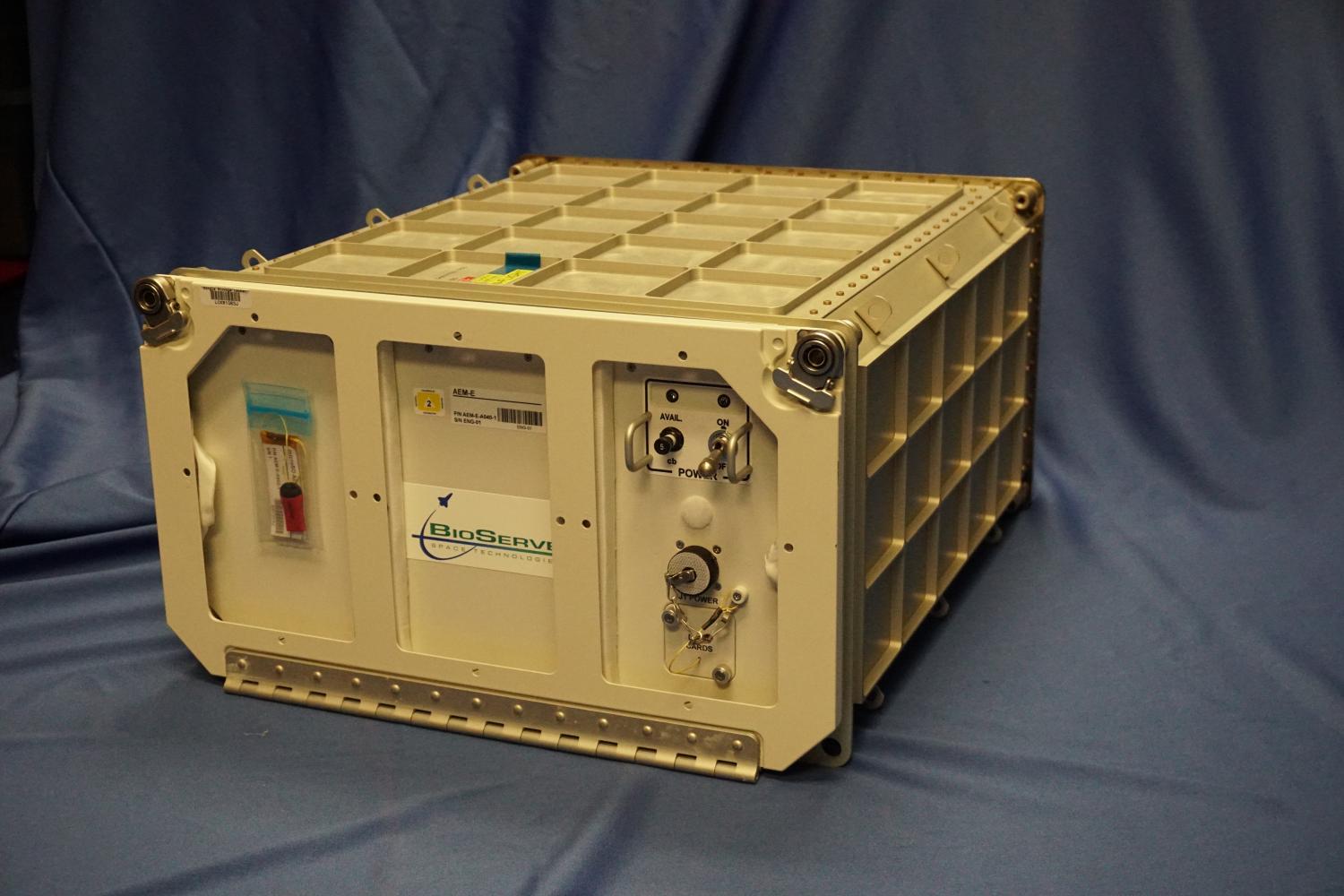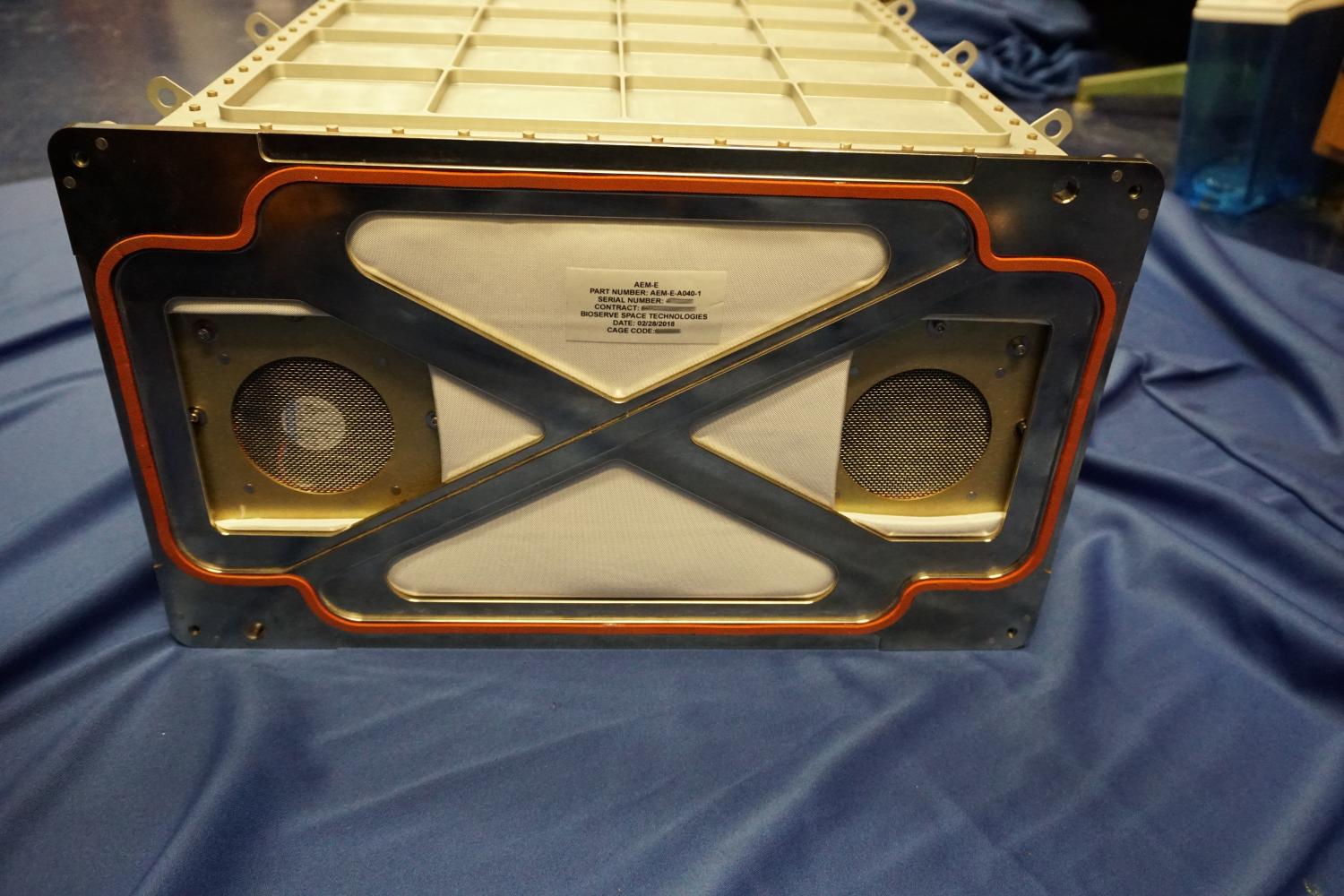
AEM-E
A Miniature, Self-Contained Rodent Life Support System for the Cygnus Spacecraft
Animal Enclosure Module - ECLSS (AEM-E) is a middeck locker-sized insert for the Northrop Grumman Cygnus spacecraft enabling the transport of up to 40 mice or 12 rats to the ISS for the purposes of rodent research. The rodents themselves are housed in the separate NASA-provided AEM-T insert which provides the rodents with habitat space, food, and day/night lighting cycle. The function of AEM-E is to handle the metabolic needs of the rodents during their journey including O2 consumption, CO2 production, and H2O production for up to 10 days. To accomplish this, AEM-E contains environmental monitoring hardware that automatically triggers O2 release and CO2/H2O removal as necessary. This feedback control maintains the Cygnus Pressurized Cargo Module (PCM) at a steady, habitable level that ensures the safety of the rodents and the validity of the research being performed.
AEM-E had its first flight in 2019 onboard NG-11.
AEM-E Integration Timelapse
In 2014, BioServe performed a full mission simulation with prototype AEM-E hardware paired with AEM-T inserts from NASA with live mice. The video below shows the process required to prep the unit prior to a mission, including steps for electronic checkouts and material loading. AEM-E can be prepped for flight within the span of a single workday, allowing for AEM-E to be rapidly swapped out in the event of a launch scrub. AEM-E has since been redesigned to support CRS-2 requirements and has successfully supported several additional live mice tests.

AEM-E fits within a standard middeck locker (MDL) and operates fully autonomously, requiring only a power connection

AEM-E treats Cygnus cabin air using a rear-breathing ventilation system. In this rear view, the air inlet is shown on the right and takes in high CO2, low O2 air. After being processed by AEM-E, the air is ejected from the air outlet on the left with reduced CO2 and increased O2.

